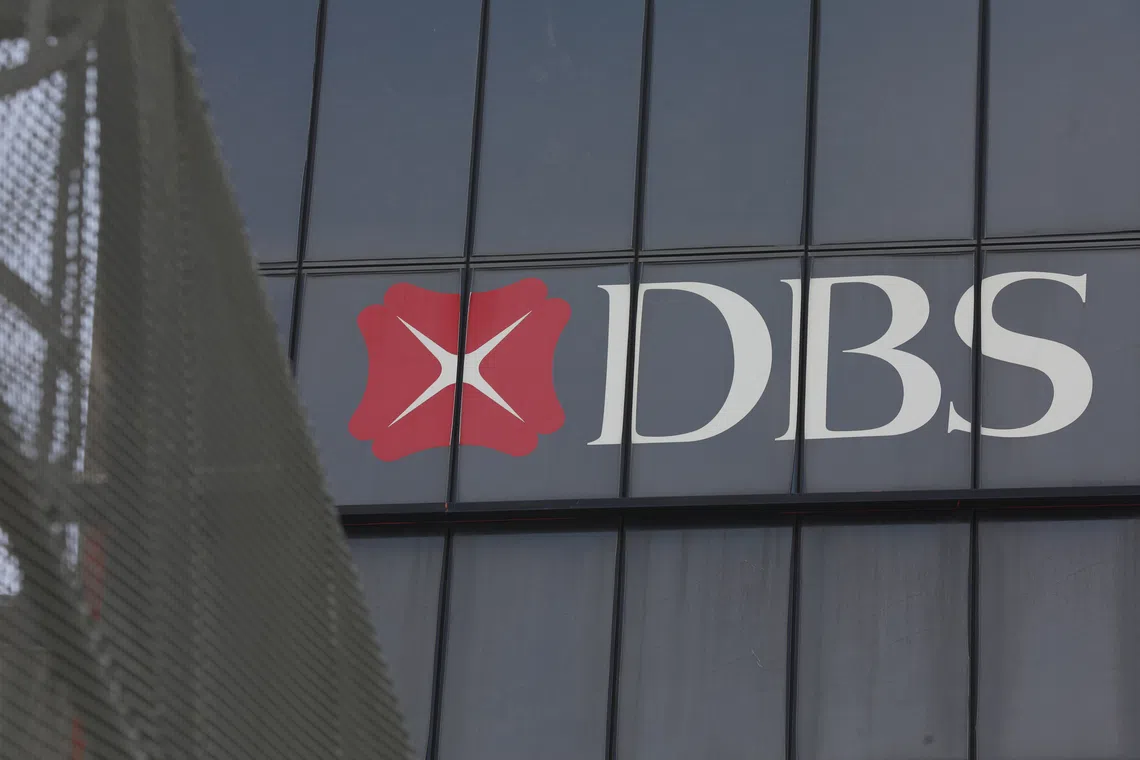Digital financial planner helps S’poreans invest more and plan for retirement: DBS
Sign up now: Get ST's newsletters delivered to your inbox

The digital financial planner is designed to help customers stay on top of their finances and make informed decisions based on their needs.
PHOTO: BT FILE
Follow topic:
SINGAPORE - Using a digital financial planner has helped Singaporeans to save twice as much and invest five times more of their funds, as well as start retirement planning, according to DBS Bank’s data.
Users were also nearly three times more insured than non-users.
The digital financial planner is designed to help customers stay on top of their finances and make informed decisions based on their needs, said Mr Calvin Ong, the bank’s Singapore head of consumer banking.
“It provides timely reminders that encourage positive financial habits – whether it is saving regularly, setting aside an emergency fund or taking the next step to invest idle cash balances,” he said.
Launched in April 2020, DBS’ financial adviser, powered by artificial intelligence (AI), has developed into an all-in-one enhanced platform called digiWealth.
The two other local banks also have digital tools in their apps to help with financial planning.
For instance, OCBC Bank has a Money Insights feature on the app that helps customers “save smarter” through spending graphs, saving projections and budget-setting for various categories such as food and shopping. It also provides tips for trimming expenditure in each category.
UOB’s app has a feature that shows customers insights personalised to their financial habits. It tracks when regular monthly payments are made, provides spending patterns, suggests ways for customers to hit a $500 spending target to get bonus interest on their One accounts and tracks the interest they get each month.
In addition, digital financial planners work by sending customers nudges so they can put excess savings into investments, for instance.
The DBS planner sends a notification to customers when they have accumulated around three months’ worth of emergency savings and suggests that they consider investing incremental balances in a regular savings plan.
Similarly, the planner can detect when a customer’s Supplementary Retirement Scheme (SRS) funds have been sitting idle for some time, and will ask them to consider investing some of those funds to build a stronger retirement nest egg.
Using the digital planner, more customers are also investing in a disciplined manner by adopting a dollar-cost averaging approach, which refers to investing a fixed amount each month, DBS said.
The number of people using this approach through having a regular savings plan reached a two-year high in September 2025.
Mr Ong said: “Instead of trying to ‘time the market’ and dealing with the unpredictability of market fluctuations, we advise our customers to stay in the market by adopting a consistent, disciplined approach, such as dollar-cost averaging, which helps smooth out volatility and build wealth steadily over time.”
A regular savings plan automates monthly top-ups for bank customers and enables them to make recurring investments.
People are also putting more money into a DBS portfolio for retail investors – the DBS digiPortfolio, a feature of the digital planner. The amount that users invested rose 50 per cent from January to September 2025.
Mr Ong recommended that people should set aside and invest at least 10 per cent of their monthly net income, with an aim to invest at least 50 per cent of their net worth over the long term.
But he cautioned that people should be aware that all investments contain an element of risk, due to factors such as market conditions and fluctuations in currency exchange rates.
“The key to successful investing is in understanding and managing these risks appropriately. It is important to consider how much risk you are willing to take, how prepared you are to lose part or all of your capital, and whether you have the ability to make good any losses incurred,” he said.
On the DBS digiWealth platform, users can also set their risk profile, which will correspond to the targeted return of their investments. For instance, if customers have low-risk profiles, it means they are willing to accept low returns.
Financial planning has also helped customers to start planning for retirement from a young age.
Nearly half of the investors who started using DBS’ retirement portfolio when it was launched were customers aged 40 and below as at March 2024. The feature, which is one of six options in the DBS digiPortfolio, helps people invest as little as $100 for their retirement.
Among these younger customers, 70 per cent also set recurring top-ups.
“This signals that young Singaporeans are not just aware of the need to plan early, but are also actively forming disciplined habits of making smaller, regular investments that compound meaningfully over time,” Mr Ong said.
He noted that this also reflects a broader mindset change, where retirement planning starts young rather than being something they think about later on in life.
The portfolio also adopts a strategy where investors can take more risks when they are younger, but moderates that risk as they grow older and approach retirement.


